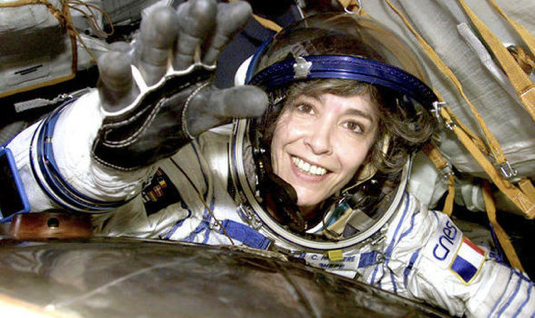Prof. Lavinia Heisenbergs' group

Our research activities in Theoretical Cosmology
- Effective field theories based on vectors: The most general effective Lagrangians for a massive vector field on curved space-time with second order equations of motion have been constructed. Vector fields were traditionally thought not to be appropriate for cosmological models, i.e. inflation and dark energy. A promising route in this respect has started in relation with possible extensions of the Proca vector field. Not only do they generate homogeneous and isotropic cosmological solutions but allow successful realizations of screening mechanisms. Another particular property of these vector-tensor models is the possibility of reducing the effective gravitational coupling at the late cosmological epoch due to the presence of intrinsic vector modes. We study both their radiative stability under quantum corrections as well as their confrontation with cosmological observations.
- Testing gravity with Gravitational Waves: We had to wait a century since the inception of GR for the major breakthrough of observing gravitational waves (GWs). The LIGO detection of GWs emitted by the merging of two black holes has opened a new and unique opportunity to test GR in unexplored regimes. More recently, the first detection of the signal from the merger of two neutron stars inaugurated the era of multimessenger astronomy, allowing to observe the signal of the event in GWs as well as in its electromagnetic counterpart. Among many other revolutionary discoveries, this observation posed a direct constraint on the difference in the propagation speeds of GWs and photons. We can use GWs to extract the properties of our universe with data that complements the electromagnetic spectrum. We investigate the effects on the GW signals induced by the presence of additional fields in the effective field theories of gravity.
- Geometrical manifestation of gravity: The geometrical nature of gravity emerges from the universality dictated by the equivalence principle. In the usual formulation of GR, the geometrization of the gravitational interaction is performed in terms of the spacetime curvature, which is now the standard interpretation of gravity. However, this is not the only possibility. There exist two alternative, though equivalent, formulations of GR in flat spacetimes, in which gravity is fully ascribed either to torsion or to non-metricity, thus putting forward the existence of three seemingly unrelated representations of the same underlying theory (the geometrical trinity of gravity). Even though the equivalence of the classical dynamics is guaranteed, we investigate differences in considerations of energetics, thermodynamics and quantum theory. Furthermore, the three equivalent formulations can explicitly be broken by considering generalizations beyond the standard Lagrangians.
- Embedding effective field theories into quantum gravity: A contender for a fundamental theory of quantum gravity is string theory, in which all elementary particles are rep- resented by one-dimensional strings. In this context, one active field of research arose in an attempt to answer the important question: should string theory really be the ultimate theory of quantum gravity, can we naturally embed the effective field theories of gravity known to us into string theory? This follows the expectation that the UV completion of a given theory will disclose important properties of the low-energy EFT. EFTs of the Swampland represent an inhabitable space of theories incompatible with quantum gravity. We study in detail whether the prominent EFTs for gravity can be successfully embedded into string theory and what are the implications of the Swampland criteria for the early and the late-time universe. Another powerful constraining tool for the low-energy EFTs is the framework of positivity bounds, given by the powerful implications of S-matrix unitarity and analyticity. We also investigate the implications of quantum corrections for the low-energy sector. This includes the renormalizability properties of classical Lagrangians and the structure of the arising counterterms.
- Observational constraints of EFTs of gravity: The confrontation of EFTs with cosmological observations is a crucial ingredient in testing their viability. A natural starting point is the study of the background evolution and to constrain the parameters using the distance redshift relation from Supernovae, the distance priors method from CMB and BAO measurements. The cosmological observations with the most constraining power is the spectrum of temperature fluctuations of the CMB. For this purpose we develop new numerical Boltzmann codes and investigate the presence and relevance of screening mechanisms. The non-linear evolution is responsible for the formation of the structures that we observe in the universe and, for that we need to resort to methods beyond the linear regime. In order to analyze the distribution of galaxies and matter in our universe we need N-body codes and develop a physical understanding for the time sequence of gravitational clustering, especially the evolution of peculiar velocities and the number density of collapsed objects.
- Kinetic Field Theory for N-body simulations: So far, non-linear, late-time cosmic structure formation could only be studied with computation-extensive numerical simulations covering large-scale modes and resolving small-scale structures at the same time. This makes it forbiddingly time consuming to run suites of sufficiently detailed numerical simulations for studying the effects of different cosmological models on evolved cosmic structures. A new analytic approach to non-linear, non-Gaussian cosmic structure formation, Kinetic Field Theory (KFT), was proposed. In essence, KFT dissolves the cosmic matter field into classical particles and follows their Hamiltonian trajectories in phase space by means of a Green’s function. KFT can be readily generalized to other cosmological models. For that one needs to adapt the Green’s function to the expanding cosmological space-time and change the interaction potential of the particles accordingly.
